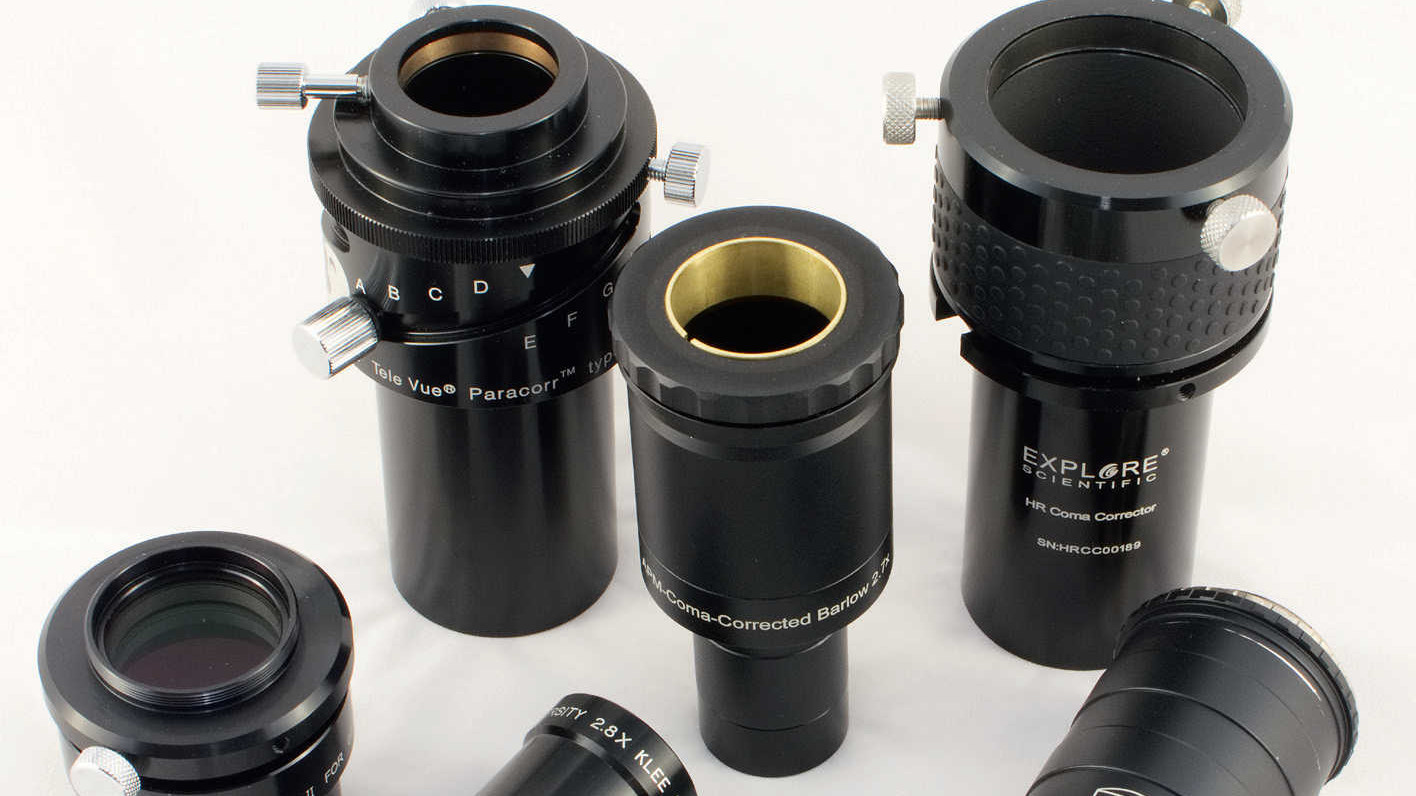Correctly deployed
Additional optical components such as correctors, reducers, and Barlow lenses can change the focal length of an optical instrument and improve the image it produces.
 Whether for photography or visual observing: additional optical components open up new possibilities and can improve image quality. S. Wienstein
Whether for photography or visual observing: additional optical components open up new possibilities and can improve image quality. S. WiensteinTelescope tuning by means of additional optical components in front of the eyepiece and camera
Whether in front of the eyepiece or the camera chip: additional optical components are an elegant form of telescope tuning. Correctors improve the image, reducers and Barlow lenses change the focal length and effective focal ratio.
Probably the most common additional optical component is the Barlow lens. It primarily changes the effective focal length of the telescope by the factor specified. So a 2× Barlow turns a 750mm focal length into 1,500mm – which means that the magnification of all eyepieces can be doubled or, as in this example, the Moon can be photographed in full format. But it is not a miracle cure: the increased magnification makes the image just as dark as when using an eyepiece with the relevant focal length.
A certain shortcoming remains: no optical surface is free of errors and in a Barlow lens you should expect at least four and sometimes as many as six or eight reflecting surfaces. Even with the best quality, this means a small loss of light and contrast. A cheaply-produced Barlow is therefore more of an emergency solution. On the other hand, well designed high-quality Barlow lenses can do even more: they have a positive effect on field curvature or, if appropriately constructed, compensate for the coma at a Newtonian's image edge.
Barlow, Shapley and reducer
The more compact the Barlow lens design and the greater the factor, the greater the eye relief of any eyepiece used with it – although unfortunately this comes with side effects: the altered light path can lead to vignetting effects. The further in front of the image plane a Barlow lens sits, the more the effective focal length is extended and the longer the light path behind the Barlow lens becomes. Used in this way, it provides additional back focus, for example, to connect a binocular adapter. On fast telescopes, however, a glass path corrector is needed for binocular attachments. This deliberately introduces minor correction errors in order to compensate for aberrations caused by prisms.
A Shapley lens can be thought of as a Barlow lens with a factor of less than 1× – that is, a lens system that shortens the effective focal length. This is most useful for photographers, who can store more celestial detail on a small chip with a shorter exposure time. A photographic reducer will correct even more specific telescope imaging errors. The name, of course, only describes the focal length reduction, but specially adapted reducers can have a positive effect on many imaging errors. Visual observers are better to use long focal length eyepieces, because a Shapley lens of the same size cannot capture a larger section of the sky than an appropriately selected eyepiece.
Correcting imaging errors
Pure correctors hardly change the focal length, but they do correct aberrations. Most common among these are coma correctors for Newtonians, and also field flatteners. As you can imagine, that the more specific the correctors are to a particular type of telescope and its individual aberrations, the better they work. If you use a corrector designed to correct an error that your telescope does not have, then the opposite error is generated: a kind of reverse image defect. Probably one of the most extreme correctors is or was the Chromacor, which could conjure the image of an ED APO from an achromatic refractor. However, it was not enough to produce a corrector for a particular series of telescopes, but rather to select the best possible combination of telescope and corrector from the huge range of products on the market. Meanwhile, the price trends of today's ED APOs makes this economically unviable.
Author: Sven Wienstein / Licence: Oculum Verlag GmbH
